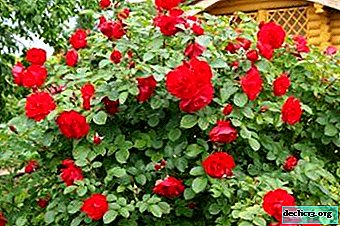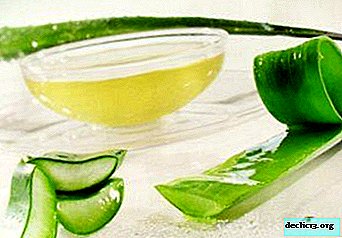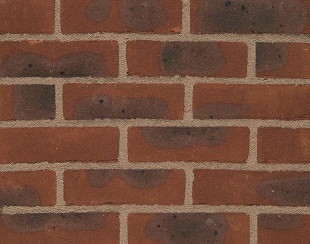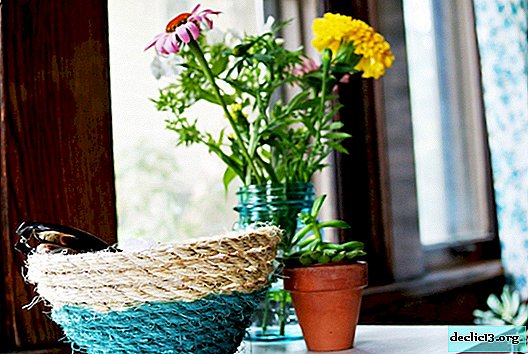All about orchid pests and how to deal with them
 Orchid is one of the most beautiful tropical plants, which for a long time can please with bright and lush inflorescences even at home.
Orchid is one of the most beautiful tropical plants, which for a long time can please with bright and lush inflorescences even at home.
A beginner grower simply must know the main pests that infect this plant in order to be able to take timely measures to destroy them. In this article, we will talk in detail about all the parasites that can destroy a flower. And also, about chemicals and folk remedies for the treatment of orchids.
What it is?
Choosing an orchid in the store, the florist often inspects exclusively its leaves, flowers and stem. However, it is very important to carefully check the soil in the pot as well. It is in the substrate that pests dangerous to the flower prefer to settle. These are all kinds of bugs with antennae, white worms, winged insects, etc.
Most common pests:
- aphid;
- worm;
- spider mite;
- thrips.
Danger to plants
The negative effects of the life of parasitic insects on an orchid can be very different - from growth inhibition to its complete death. If the leaves began to turn yellow, dry and curl, or their surface is covered with a sticky mass, if strange bumps, dots and punctures that were not previously observed appear on the stem, then there is a great chance that the flower was attacked by pests.
Determination of the type of insect
 You can determine which pest to fight with either by the appearance of the insectif it was found during the inspection or immersion of the flower pot in water, or for the damage that was caused to the plant.
You can determine which pest to fight with either by the appearance of the insectif it was found during the inspection or immersion of the flower pot in water, or for the damage that was caused to the plant.
- Brownish-yellowish tubercles on the stem indicate infection with scabies.
- Deformation and twisting of the leaves implies that it is possible that nematodes or aphids are present in the flower pot.
- A large number of black dots on the plant directly indicates that thrips threaten the orchid.
- And if you find a plaque on the orchid that closely resembles a cobweb, then the plant has undergone the most malicious pest - the spider mite.
General methods of struggle
Important! As soon as there is a suspicion that the orchid is infected with pests, it is necessary to isolate the flower pot from other plants. After that, you need to decide on a way to get rid of these parasites.It may turn out to be limited to the mechanical removal of harmful insects. A thorough inspection of the plant, collecting found pests, cutting yellow leaves and sluggish shoots, carrying out the procedure of immersing the flower pot in water, will certainly give a positive effect. But in this way, 100% disposal of parasites cannot be achieved.
All kinds of drugs, both chemical and folk, will give a much more pronounced effect. With their help, you can fight not only with the insects themselves, but also with their larvae, which will provide a more complete treatment for orchids.
Means that are used for flower processing and their treatment
Chemicals
Very often, only chemicals can restore the health of your beloved orchid. But such substances must be used extremely carefully and wisely. If possible, it is worth choosing drugs with a low 3 or 4 hazard class. And only in extreme situations, resort to the purchase of a hazard class 2 substance.
These drugs must be used strictly for their intended purpose. Do not ignore safety measures and recommended dosage.
Experienced growers recommend starting treatment with drugs: safety and the recommended dosage. Experienced flower growers recommend starting treatment with drugs:
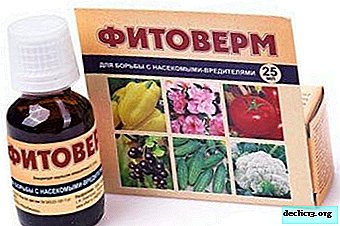 "Fitoverm".
"Fitoverm".- "Actara."
- Inta-Vir.
- Tanrek.
- Confidor.
If more serious treatment is required, then resort to more toxic means:
- Actellik.
- "Karbofos".
- "Vertimek".
Folk remedies
- Soap solution. Dissolve 1 tablespoon of any liquid soap in 1 liter of water. Even a dishwashing detergent is suitable. As an option, you can take laundry soap by rubbing it first on a grater. With this solution, you need to thoroughly rinse the entire surface of the flower.
- The infusion of tobacco. 30-40 gr. Pour tobacco dust with 1 liter of water. Allow the mixture to infuse for a day, periodically mixing the ingredients. After a day, strain the infusion and spray it with a plant.
- Onion infusion. Take the middle onion, grind it into the pulp and pour boiling water. After 7 hours, the infusion will be ready for use. This mixture is treated with leaves and flower stalk for 3-4 days in a row.
Biological products
Reference. Their main advantages are that they do not accumulate in the plant itself, act quickly and for a long time. Also, they are not addictive in pests. And some remedies also increase immunity in flower plants.To combat a wide range of pests, drugs are used:
- "Bicol."
- "Bitoxybacillin."
- Lepidocide.
- "Verticillin."
- "Aversectin C".
- Nemabakt, etc.
The name of the parasite, appearance and photo, than to process the flower
Cats
Females are able to multiply very quickly, so the fight against them must begin as soon as possible. But first you need to find out their appearance. Most often these are sciarids, they are also called "mushroom mosquitoes". It is easy to recognize them - a black body, a length of about 4 mm, a pair of almost transparent wings. The insect itself is not dangerous for the orchid. And here is his larvae adversely affect the roots of the plant, gradually weakening the flower.
To combat midges, they resort to complex treatment - the upper part of the plant is sprayed with Reid or Raptor preparations, and the substrate is etched with Fitoverm or Aktellik.
Proponents of folk methods use - tobacco, a solution of laundry soap or potassium permanganate, citrus peels or cloves of garlic, etc.

Ants
The appearance of the ant is familiar to everyone - red or black insects, 2 to 4 mm long, have 3 pairs of paws. They live in numerous colonies. They love to feast on the sweetish secretions of aphids and worms. Swarm tunnels in the ground, ants damage the roots of the plantas a result of which his death may occur.
Ants are able to multiply rapidly, so you can not delay with their extermination. If you are a supporter of radical methods, then you should immediately use chemical agents. For example, Fitoverm, Permethrin, or special traps with an insecticide used according to the instructions will give a quick and lasting effect.
Experienced flower growers offer these pests to try just to drown. To do this, the flower pot is poured with plenty of water (it is convenient to do this by putting flowers in the bath), after which it remains only to wait 30 minutes. During this time, part of the ants will scatter, and the remaining insects will drown. After the procedure, it is advisable to change the soil in the flower to a new one.
Another common ant control tool is soap solution.with which they rub the leaves and stem of the orchid.
On a note. So that the ants no longer settle in a flower pot, the soil should be sprinkled with chopped cloves, anise, red pepper or turmeric. This will not harm the orchid, but the ants will scare away.
Cockroaches
In general, domestic cockroaches do not live in flower soil. However, they may well arrange a temporary shelter in the lower part of the flower pot. Cockroaches enter the pot, as a rule, through drainage holes. Especially susceptible to this are plants that stand on the ground.
To cope with them is simple - cockroaches do not tolerate abundant watering, as a result of which they run away or drown.

Nematodes
Nematodes are light translucent worms about 2 mm long. It is very easy to identify this pest, it leaves characteristic grooves around which light spots are visible. After some time, these spots darken. The nematode affects both the stem with leaves and the root system.
Fighting her is quite difficult. Usually flower growers, instead of getting rid of insects, prefer to throw away a diseased plant so as not to infect other flowers. But, it’s worth at least trying to reanimate the orchid and spill the soil with a solution of Decaris in a dosage of 1 tablet per 1 liter of water.
Reference. Nematodes also do not like high temperatures. You can try to put a flower under the shower (water in the region of 40 ° C). This method should be resorted to as a last resort, since there is a likelihood of the death of the plant itself.
Earthworms
Ordinary earthworms do not affect the health of orchids. However, flower growers still prefer to drive them out of flower soil.
This is not difficult to do, you again need to resort to flooding the substrate with ordinary water. In less than 10 minutes, the worms will attempt to surface. They just need to be removed from the pot.

Mealybug
These are insects of white, pink or light brown color, oval shape. Size no more than 5 mm. The insects themselves are visually difficult to detect. If you see, white small shaggy balls appeared on the plant, then you should know: this is the offspring of a female worm. It is under this "yarn" that both the individuals themselves and their future offspring hide.
The fight against mealybug takes place in several stages:
- First you just need to clean all the balls from the plant. This is done with a rag or brush.
- After mechanical cleaning, it is necessary to use the chemical agent "Actellic", carefully spraying them with a flower.
- After 7 days, treatment with chemicals is recommended to be repeated again.

Watch a video on how to treat an orchid from a mealybug:
Woodlice
You rarely come across these insects in a pot with an orchid. But, as soon as a wood louse gets there, it is necessary to start a fight with it immediately. If this is not done, then the pest will eat around the young leaves and shoots of the plant.
The wood louse can reach a size of up to 1 cm. It has a shell of gray or marble hue, 7 pairs of legs and a long mustache. In general, it is very difficult to confuse with other insects.
The fight against wood lice is not particularly original - they can be flooded, like worms or cockroaches, or you can just transplant the plant into another soil, after washing the orchid roots with water.

Bugs
If you find strange bugs on the plant that were not previously there, you need to decide what kind of pest they belong to. This will simplify the choice of the option to deal with them. If the body of the parasite is white, then most likely it is a mealybug, if black, then it is thrips.
If it is not possible to establish the type of insect, it is recommended to replace the orchid soil with a new one, washing the roots, and treat the plant with insecticides, such as Fitoverma.
We talked about different types of bugs on an orchid and how to deal with them here, and from this article you will learn what to do if the bugs wound up on the plant itself or in the ground.

Ticks
Spider mites are another type of pest that can kill a plant. They have a yellow or red color, the same color and the parasite larvae. It is almost impossible to see them without a magnifying glass. But, if a thin, almost invisible cobweb between the leaves is noticed, then there can be no doubt that the flower is infected with a spider mite.
To cure an orchid from this pest:
- Remove affected leaves.
- Wipe all other terrestrial parts of the plant thoroughly with a cloth dampened in Fitoverm.
- With the same tool, you need to spill the soil into which the plant is planted.
Read about the various types of ticks affecting orchids, as well as how to deal with them.

Thrips
These are insects of black color, with an elongated body and yellow-brown wings. This pest has a huge number of varietiesHowever, on orchids there are mainly 5 types of thrips:
- California
- Tobacco
- Dracenaceae.
- Black or American thrips.
It is necessary to start treatment for thrips:
- With the bountiful soul of orchids. It will not save completely from the pest, but its number will be significantly reduced.
- Next, you need to remove the damaged parts of the plant, they still can not be saved anyway.
- And, finally, the flower must be treated either with the preparation "Vertimek" according to the instructions, or, if the choice fell on folk remedies, with a mixture of ordinary water and olive oil.

Shields
Scabies are difficult to confuse with other pests due to the characteristic body resembling a scutellum. The insect can reach 5 mm in length. Color varies from light to dark brown. Males have wings and can fly to neighboring plants.
Treatment for scabies consists in washing the ground part of the plant and then treating the orchid with chemical agents. For example, it can be Permethrin or Actellic.
We talked about how scale insects look, how they can harm an orchid and how to get rid of them, in a separate article.

Fools
These are small gray-brown or gray-white insects. They behave extremely mobile, they live most often in the ground. In small quantities, they are not dangerous, although gardeners prefer to get rid of them all the same. And that makes sense! As soon as the nutrients, which are fodder for subleys, run out in the substrate, they will begin to eat the roots of the orchid.
Fitoverm will help get rid of these peststhat need to be shed. To prevent the women from getting divorced again, it is recommended that the soil in the flower pot is not too wet.

Pests of orchids - podura. Watch a video on how to recognize and resuscitate a plant:
Whiteflies
Whitefly is a small white butterfly. It lays larvae on the underside of the leaf, as well as under the bark of the plant. It is the larvae that cause the greatest harm to the orchid; they damage the leaves of the flower quite strongly.
To eliminate whiteflies, the insects themselves are manually captured and killed. Larvae are neutralized by a chemical preparation, for example, Fitoverm or Aktellik.

Aphid
Aphids can be seen with the naked eye - these are small bugs of black or greenish color. This pest mainly loves young shoots or leaves and usually parasitizes on them, leaving a sticky coating in which the fungus propagates.
The fight against aphids is to treat the plant with insecticides. You can also resort to folk methods by spraying an orchid with an onion or tobacco-soap solution.

Spiders
Sometimes small greenhouse spiders settle in the soil or on the leaves of a flower. This does no harm to the plant itself. However, entangling with a web of orchid inflorescences, spiders spoil the beautiful appearance of the plant.
No chemistry is required to fight spiders. You just need to carefully inspect the flower, collect insects from it and wipe all the leaves to remove the cobwebs.

Millipedes
These pests have an elongated body and a large number of pairs of legs. The color of insects varies from white to dark brown. They feed on the juicy parts of the orchid, damaging young leaves and roots.
Millipedes move very quickly and it is extremely difficult to catch them manually. To eliminate them, they resort to flooding the flower pot with water for 1-2 hours, so that the insects simply drown, or to the soil by insecticides Fitoverm or Actellik.

Snails
This pest is not easy to detect. The fact is that in the daytime snails are in the ground and only creep out to the surface at night. They feed on tender young shoots and buds, which adversely affects the further growth of orchids. You can suspect the presence of this pest in a flower pot in silver stripes.that he leaves when crawling over a flower.
A common practice in the fight against snails is to lay tasty lures, for example, slices of a juicy apple, next to the orchid. After the pest crawls onto the bait, you just need to remove it. Unfortunately, this will have to be done at night. If this option is not suitable, then you can simply change the soil of the flower, thoroughly washing the roots with water.

Plant damage prevention
The most important preventive action is to choose a really healthy plant in the store. On the ground part of the flower there can be no damage, and the shoots and leaves should not be dry or deformed.
Further It is worth testing for the presence of parasites in the ground. You can do it this way:
- Pour water at room temperature into a deep container.
- Put a pot of plants in it so that the water level is a couple of centimeters below the edge.
- Wait 5-7 minutes.
After this, it is worth a few more days to hold the flower separately from other indoor plants and observe it.
Watch a video on how to test for pests in an orchid:
Conclusion
An orchid grower must necessarily be able to determine the type of pest on his favorite plant and know how to deal with it. Properly selected method of treating a flower significantly reduces the chance of its death.
And do not forget that healthy plants are practically not attacked by harmful insects, so proper orchid care is what will become a reliable barrier against parasite attacks.

 "Fitoverm".
"Fitoverm".
